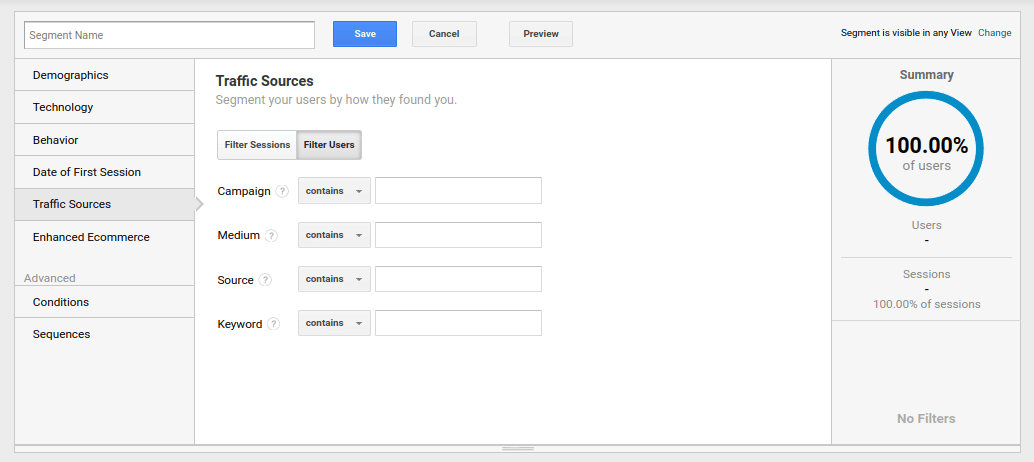Maximize Your ROI With Remarketing in Google Analytics
By harnessing the power of user data and tailoring ads to details target market sectors, businesses can dramatically intensify their conversion rates. The journey to optimizing ROI through remarketing is a nuanced course led with understandings and chances that can reshape the trajectory of your advertising and marketing endeavors.
Comprehending Remarketing in Google Analytics
Recognizing remarketing in Google Analytics is vital for optimizing your digital marketing approach. Remarketing enables you to target customers who have actually previously seen your internet site or connected with your application, providing them with customized advertisements as they browse various other websites or utilize other applications within the Google Present Network. This approach assists maintain your brand name top of mind and motivates users to go back to your website, inevitably raising the possibility of conversion.
By making use of Google Analytics, you can track the efficiency of your remarketing projects, acquiring important insights into user actions, involvement, and conversions. This information allows you to refine your bidding process, targeting, and messaging methods to enhance the total effectiveness of your campaigns.
Furthermore, comprehending the various kinds of remarketing listings offered in Google Analytics, such as standard, dynamic, and comparable target markets, permits you to develop highly segmented and personalized projects customized to details user sectors. This degree of granularity can dramatically improve the significance and impact of your remarketing efforts, eventually optimizing your roi.
Establishing Up Remarketing Lists
To effectively apply remarketing projects in Google Analytics, the preliminary action involves developing and setting up remarketing listings targeting particular user sections based upon their communications with your web site or application. By setting up remarketing listings, you can tailor your advertising and marketing efforts to reach individuals that have already revealed passion in your solutions or products.
To start, navigate to the Admin section of your Google Analytics account and pick the Residential or commercial property where you want to produce the remarketing checklist. Then, under the Residential property column, click 'Audience Definitions' and pick 'Audiences.' Next off, click on the red 'New Target market' button and select 'Develop New' to specify the parameters for your remarketing checklist.

Crafting Effective Remarketing Advertisements

When crafting your ads, concentrate on developing eye-catching headlines and engaging visuals that stick out to possible clients. Incorporate solid calls-to-action that encourage individuals to review your website and finish a wanted activity. Make use of dynamic remarketing to show customized advertisements including products or services that users have actually previously checked out on your site.
In addition, guarantee that your advertisements are mobile-friendly considering that a substantial part of net web traffic originates from mobile phones. Test various advertisement variations to identify which styles and messages drive the finest outcomes. By continually refining and maximizing your remarketing ads based upon performance data, you can maximize their effectiveness and enhance your return on financial investment.
Analyzing Remarketing Performance

With Google Analytics, marketing professionals can track the efficiency of their remarketing campaigns in real-time, allowing them to identify patterns, patterns, and locations for check my source improvement immediately. By assessing the data, marketers can figure out which ads are executing well, which target market sectors are reacting positively, and which networks are driving the most conversions. This degree of granularity enables marketing professionals to make data-driven decisions to enhance see post their remarketing projects for much better results.
Optimizing ROI With Remarketing
Examining remarketing information in Google Analytics enables marketers to pinpoint opportunities for maximizing roi (ROI) through critical adjustments - What Is “Remarketing” In Google Analytics?. To maximize ROI with remarketing, it is essential to recognize the behavior of your audience. By analyzing user communications, such as the web pages they went to, the items they checked out, or the actions they handled your site, you can customize your remarketing campaigns better
Segmenting your target market based on their habits allows you to create customized and targeted advertisements that are more probable to resonate with them. By showing appropriate advertisements to particular sections of your audience, you can enhance the possibilities of conversion and eventually enhance your ROI.
In addition, examining various advertisement creatives, messaging, and deals can assist recognize what resonates best with your target market. A/B screening enables you to trying out various aspects of your advertisements to identify what drives the highest involvement and conversion rates.
Verdict
In verdict, taking full advantage of ROI with remarketing in Google Analytics needs a critical method to analyzing customer behavior, segmenting target markets, producing tailored advertisements, and maximizing project efficiency. By leveraging data-driven insights and evaluating various approaches, companies can improve their remarketing initiatives to drive higher engagement and conversion rates. This organized approach ensures that sources are successfully alloted towards making the most of returns on financial investment in remarketing campaigns.
Next off, click on the red 'New Audience' button and choose 'Produce New' to define the specifications for your remarketing checklist.
By continually refining and optimizing your remarketing advertisements based on performance information, you can optimize their effectiveness my blog and improve your return on financial investment.
By diving right into these insights, marketing professionals can obtain a thorough understanding of just how their remarketing initiatives are reverberating with their target audience and driving conversions. To take full advantage of ROI with remarketing, it is crucial to recognize the behavior of your target market.In conclusion, maximizing ROI with remarketing in Google Analytics calls for a strategic strategy to analyzing user behavior, segmenting target markets, producing customized ads, and maximizing project efficiency.